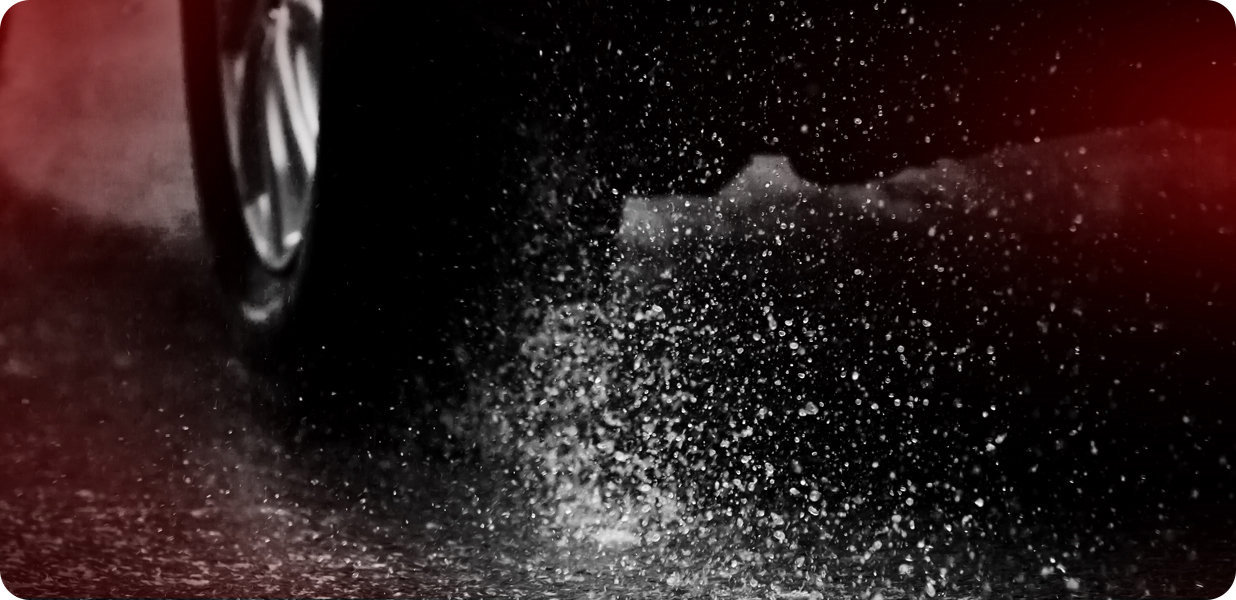
The rainy season is quickly approaching and aquaplaning is one of the biggest headaches during this capricious season. The changing weather can take anyone by surprise, even the most experienced drivers. So we decided to give you some tips and tricks in trying to avoid it.
What is aquaplaning?
Aquaplaning is when a thin layer of water forms between the tyres of your car and the road. This is usually due to rain. Tyre treads cannot remove water on time, grip drops dramatically, all of this leading to loss of control over the car.
Road safety tips

- Check your tyres before you hit the road, and here we aren’t just talking about pressure.
Aquaplaning can happen even with new tyres, but with used ones, it becomes almost impossible to control your car. The legal tread depth limit in Europe is 1.6 mm, and if your tyres approach this limit, you need to renew them now so as not to endanger your safety and that of others.
- Before leaving, check the weather conditions so you won’t be surprised by bad weather and adjust your speed accordingly.
- Drive calmly and be as vigilant as possible. This applies in any situation, but in the case of aquaplaning it can help you anticipate and avoid some unpleasant scenarios.
How to avoid aquaplaning

Reduce the speed. You should drive 15-20 km less than usual during heavy rain. Thus the water can come out of the tyre treads, resulting in better grip and much better contact with the ground.
Try not to drive on the far right of your lane. That part of the road can be uneven and have water accumulating.
Leave enough space between your car and other drivers. You never know how the driver in front of you can react. As braking space increases in the rain, you always want to be sure that you can drive safely. And in corners brake gradually, otherwise there is a risk of skidding.
Make sure your tyres meet the challenges! If you are looking for such tyres, we will be happy to help you. We recommended performing a monthly check of your tyres to ensure the quality of their grip.
What do you do when your car is aquaplaning?

- First of all, try to stay calm. There is nothing worse than panicking and swerving in such moments.
- Calmly start to slow down and downshift into a lower gear to use the engine brake.
- Keep the steering wheel straight, do not increase the speed and do not brake to the max because this way, you risk reducing the grip even more.
- When you feel you regain control of the car, you can easily apply the brake.
Conclusions

When you set off, it is ideal to check the weather conditions in advance. If it rains, two things are very important for your safety: the speed and condition of the tyres. If you feel that the rain is too heavy and the visibility is too low to continue, it would be best to pull over and make yourself visible using the hazard lights. And always wear your seat belt.
Read about winter driving and driving in the fog.
Don’t forget to check us out on Facebook, Instagram, LinkedIn, Pinterest, Youtube and TikTok 😉
